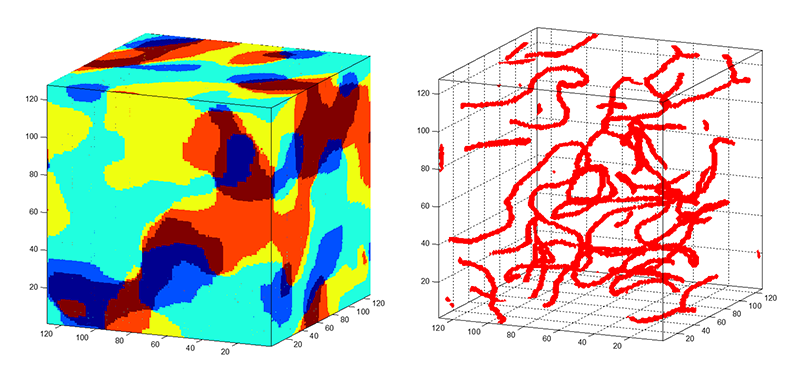Numerical simulations
Numerical simulation techniques in general can be seen as a link between theory and experiment. Based on theoretical models and predictions a numerical simulation generates data which can be compared with experimental results. The range of applications is very broad and covers almost all areas of physics and material sciences. In our group we mainly deploy two simulation techniques, Monte-Carlo simulations and phase-filed simulations.
Monte-Carlo Simulations
Monte-Carlo (MC) simulations are a common and well established method in statistical physics to simulate macroscopic properties of matter. In our group we are focused on the physics of ferroic materials. Here we can apply MC simulations to study the phase diagrams of magnetic, ferroelectric or multiferroic materials. We can visualize the often complex domain patterns in this class of materials or can explore their inner three dimensional structure, which is sometimes experimentally not accessible.

Phase-field Simulations
Phase-field simulations are a powerful tool to investigate ferroic properties such as domain distribution, domain-wall width or hysteresis curves. In contrast to Monte-Carlo simulations, no microscopic description is required, a Landau expansion of the free energy is sufficient. This means that Phase-field models can be derived from symmetries of a crystal and can thus be applied to any ferroic material. In addition, they give a realistic time evolution of a system, which makes them ideal to study out-of equilibrium scenarios.